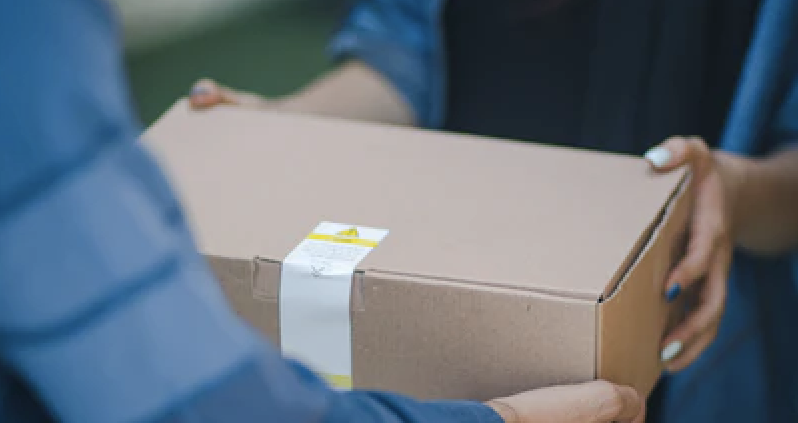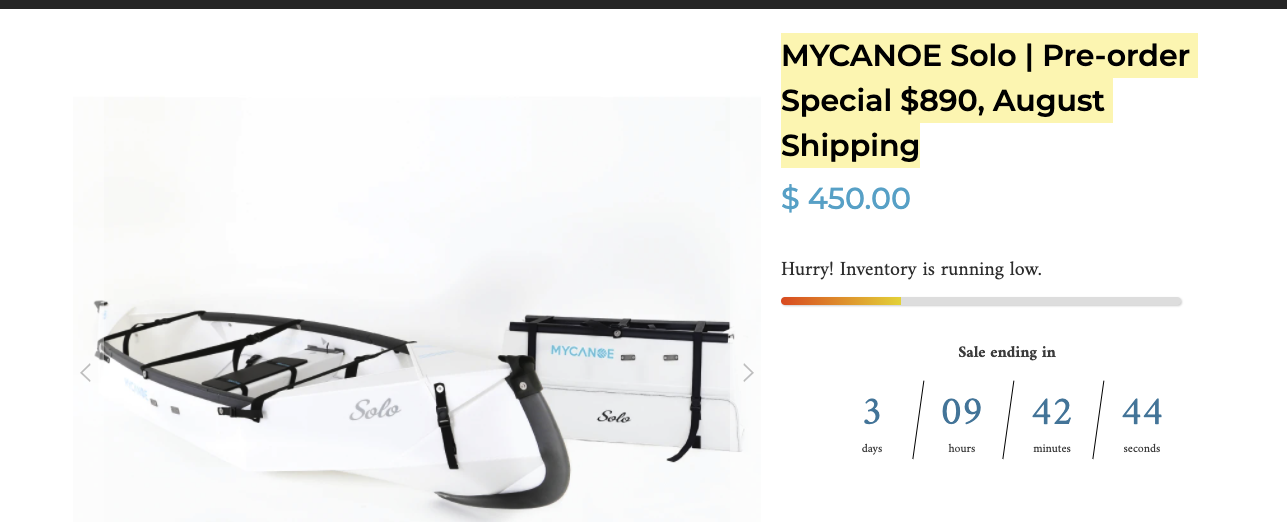Fill That Pipeline! Our Top Tips for Pre-Order eCommerce Advertising
Global supply chains, amirite? One of the most interesting and complicated disruptions in eCommerce advertising in 2021 has been the global supply chain crisis caused by COVID-19. Seemingly unrelated, right? Think again!
Even if the particularities are news to you, you’ve probably felt the repercussions. Many manufacturers who typically produce consumer goods either stopped manufacturing entirely during COVID, or quickly refocused on masks, hand sanitizer, cleaning products, personal protective gear, and more.
Now, normal manufacturing has (mostly) resumed, and demand for shipping from Asia is at an all time high, causing 6-8 week delays in inventory for many eCommerce websites. And a lot of headaches. Experts anticipate that the backlog could potentially not be resolved until Q1 2022.
This leaves eCommerce companies without fulfillable inventory for 6-8 weeks (at least), but no way they can simply stop taking orders. Especially while their competitors continue to proceed as usual.
It’s become a total shift in thinking: instead of the instant satisfaction of next day shipping from Amazon Prime, many people aren’t getting their orders for two months after they’ve ordered it. And, as we see it, this shift is here to stay. (Even Shopify agrees with us). What started as a necessary pivot to compensate for major manufacturing hiccups has become a proof of concept that can benefit eCommerce businesses long after we say, “see ya” to 2021. A quick few reasons:
- Positive effects on cash flow
- Flexibility on product launches
- Risk offset
For our clients to stay competitive as their industry shifts around them, we’ve developed and tested multiple pre-order strategies to create new user flows and define new best practices for eCommerce pre orders.
Use Your Own Data
The boogie man of digital advertisers—iOS 14.5—has thrown wrenches when it comes to attribution and data collection for many eCommerce companies. If you’ve been heavily reliant on Facebook Ads Manager for attribution reporting, you likely are feeling the burn of the change, and are looking for different ways to target users and discern how effective your campaigns are.
The good news is that despite iOS 14.5 causing tracking issues within Facebook Ads Manager, Google Analytics and your own proprietary data within your eCommerce CMS should have emerged from the iOS 14.5 battle unscathed. If you are using manual UTMs for your advertising campaigns, you can still audit campaign performance in Google Analytics, Mixpanel, or your other tool. Further, you can segment this down to the campaign and ad level, so there’s no shortage of data you can pull – time on site, CVR, pages per session, etc. that can help you optimize your eCommerce advertising campaigns.
If you’re using an eCommerce CMS such as Shopify, you can also use your existing customer data to optimize your eCommerce pre-order campaigns. Some of the many ways you can utilize this data in creative ways to increase your total pre orders:
- Take the emails of your customers, upload to Facebook as a Lookalike audience, layer on additional targeting parameters, and drive traffic to your site for more pre orders.
- Take the emails of abandoned cart users, upload to Facebook and retarget with ads to improve your CVR.
- Take the emails of abandoned cart users and create a special drip campaign to improve their knowledge of your product and offer a discount to convert.
Test Different Campaign Optimizations
Effective eCommerce advertising campaigns take a three-prong approach: Top of Funnel, Middle of Funnel, and Bottom of Funnel. The movement from awareness, to consideration, to conversion is essential for creating an engaged audience who would pre order from your eCommerce brand.
One of the best tests for pre-order campaign optimizations is trialing different campaign objectives and bidding types. Take, for example, Facebook. To exit the learning phase, Facebook requires approximately 50 optimization events before the campaign starts delivering at an optimized level. If your conversion metric is a purchase event, that’s 50 purchases before your campaigns start delivering normally.
For top of funnel campaigns, consider optimizing for a higher funnel conversion metric like landing page views or video views. The primary focus is to drive awareness and consideration prior to purchase, so consider a cheaper optimization event so you can focus on converting users deeper in the funnel.
For middle of funnel and bottom funnel campaigns, consider optimizing for add-to-cart events, or checkout initiated events prior to optimizing for the purchase event.
The same applies for PPC campaigns, even though they aren’t as affected by iOS 14.5 as Facebook. If you’re utilizing Google Search or Shopping for driving pre orders, consider testing different conversion metrics and bidding types (max clicks vs. max conversions, manual cpc vs. target ROAS, etc.) to see what works best for collecting pre orders.
Using Facebook’s lead generation objective is way overrated.
Many agencies are promoting the collection of first-party data as a response to iOS 14.5 – namely, increasing the number of tangible items they can target users with. As a result, there has been an increased focus on collecting emails, and then using them to nurture users through a lead funnel. The thought process is pretty simple: if you can collect an email for a reasonable rate, say, $2.50 an email, you can use your email service provider like Klaviyo or Mailchimp to nurture the lead into a normal conversion rate. The problem is that it’s not quite that simple.
Normal eCommerce email conversion rates for top of funnel campaigns are decreasing. According to Klaviyo, the conversion rate for eCommerce email can vary from 0.96% to 2.13%. If we take the average of that, 1.54%, and then look at our cost per lead, the expected cost per acquisition would be approximately $162.
($2.50 x 100) / 1.54 = $162
For a lot of eCommerce companies, this customer acquisition cost (CAC) would far surpass the lifetime value (LTV) of their customers. In addition, this is an average across all industries and email capture techniques. Typically, leads generated from Facebook have a lower quality than leads captured on a landing page.
In a recent project with a Tuff client, the client provided an email list of 3,200 users generated by another lead generation agency to fuel a pre-order crowdfunding campaign. The email list had the relevant, important data you would expect – first name, last name, and email address. The average email lead cost was $1, and the product they were selling retailed for approximately $95. The entire list was subjected to a drip campaign, and generated 22 purchases for $2,200 in total revenue, and a CAC of $145 ($50 more than the AOV / expected LTV for a single purchase product). In this instance, the email list generated a conversion rate of 0.67%, while all other traffic generated a conversion rate of 1.42% overall. All this to say – email can be an incredibly effective compliment to your eCommerce pre-order campaign, but should not be your primary focus.
Over-Communicate With and Educate Your Customers:
Purchasing a product online can be stressful, even though most consumers are used to buying products online at this point (Statista estimates that 230 million Americans will buy something online in 2021). The added lag time of delivery for a pre-order product can cause consumers anxiety and second guessing. You can tackle this head on in three simple ways:
- Be transparent about pre-order delivery estimates
- Keep users updated with relevant order information
- Spending time educating customers on the benefits of your product (especially in top of funnel marketing campaigns)
The objective of these three strategies is two-fold:
- Educating—using your ads and landing pages—on product benefits helps prospective customers buy into your brand and know their purchase is worth the wait. You’re fighting a consumer base that is trained to expect their Prime delivery within 48 hours, so they really need to believe in you to fulfill their expectations.
- Perform an audit on your ad creative: are you using your copy to provide testimonials, product benefits, and use cases? Is your creative showing the product in use? Don’t lead with a cold sell in your top of funnel campaigns. Educate your users before your sole objective is to get them to buy.
- Being transparent that your product is backordered or pre-order only, and spending time keeping users updated on estimated delivery dates (delays, etc.) can help reduce the amount of order cancellations, churn, and negative consumer sentiment. It’s all about managing expectations. If you pre order a product with a two-month wait time, and a month into the wait you receive an email saying it’ll be an additional two weeks for delivery, it’s much better than sitting there waiting with no context or information. Save your customer support some time and be proactive in your communication. Communication is a core component of creating positive customer experiences, and should be a focus point for your pre-order campaigns.
Don’t Focus Solely on Last Click Attribution
Because eCommerce advertisers are more reliant on using Google Analytics to optimize campaigns, it’s easy to make assumptions regarding which campaigns are driving sales. More often than not, these assumptions are part of a larger picture. Since pre orders require multiple touch points and larger consideration time than a normal purchase behavior, spend time familiarizing yourself with the multiple routes users take to make a purchase decision.
For this Tuff client, 67% of all their pre orders are made with two or more interactions with the website. Some of the top conversion paths include Google PPC to direct or organic sessions that convert, Paid Social to direct conversions, and more. Understanding how your customers reach a purchasing decision, and monitoring the amount of interactions it takes to convert, can help eCommerce advertisers know how to optimize their spend and campaigns.
Taking pre orders can be an essential part of an effective eCommerce strategy. If you’re hoping to grow your eCommerce business and are looking for a partner to supercharge your growth, schedule a free Growth Marketing Strategy session with Tuff today!

Richard has spent the last five years working at digital agencies, exploring various industries and company lifecycles. I’ve created and implemented growth campaigns on just about every platform for startups, $20,000,000 a year companies, and everything in-between. When not at work, I can be found cheering on the Penguins or Steelers, spending time with my wife and son, playing disc golf, baking, or walking my dogs.








